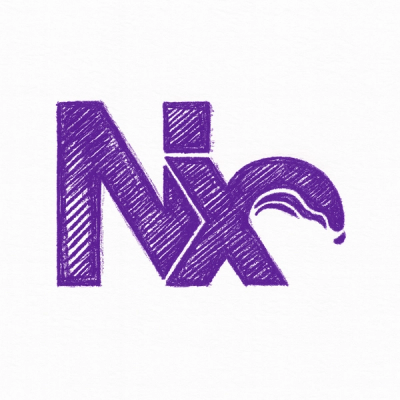

Simple and powerful database-agnostic query builder.
About
The purpose of query builder is to simplify building a complex (SQL) query for database in safe manner.
The project goals and key features is:
- Simple API to build a complex queries
- A safety of queries, to prevent SQL injections
- Universal and extensible design to build SQL queries for any database
A nano-queries is focused to be an ideal query builder, that's all. There's no a queries executor, data mapper (Active Record or something), ORM, etc.
Project design is follows the UNIX philosophy, that's why this solution works well with any database - SQLite, Postgres, MySQL, Oracle, etc.
The Design
A nano-queries design is based on the idea that only the programmer knows how to implement the ideal query properly, and the query builder must not limit the programmer in doing their work.
That's why the core concept of nano-queries is query segments.
A query segments is a nodes that represents a raw code and data (user input), and may be compiled to a query and bindings.
All query segments is based on 3 primitives:
RawSegment represents a raw code in query and will be compiled as isPreparedValue represents an user input and will be replaced with a placeholder while compilingQuery represents a collection of query segments and may contains another instances of Query. Compiler will handle all segments inside Query recursively
Additionally, there are QueryBuilder that extends Query and let you build queries step by step like that
import { QueryBuilder } from 'nano-queries/QueryBuilder';
import { SQLCompiler } from 'nano-queries/compilers/SQLCompiler';
const compiler = new SQLCompiler();
compiler.toSQL(
new QueryBuilder({ join: ' ' })
.raw('SELECT * FROM notes WHERE id IN')
.raw(
new QueryBuilder()
.raw('(SELECT note_id FROM tags WHERE name=')
.value('personal')
.raw(')')
)
.raw('LIMIT').value(100)
.raw('OFFSET').value(200)
);
And TemplateStringQueryBuilder that let you build queries like templated string
import { TemplateStringQueryBuilder } from 'nano-queries/TemplateStringQueryBuilder';
import { SQLCompiler } from 'nano-queries/compilers/SQLCompiler';
const compiler = new SQLCompiler();
const sql = new TemplateStringQueryBuilder();
const userInput = {
name: "foo",
limit: 100,
offset: 200,
};
compiler.toSQL(
sql.build`
SELECT * FROM notes
WHERE id IN (
SELECT note_id FROM tags WHERE name=${userInput.name}
)
LIMIT ${userInput.limit} OFFSET ${userInput.offset}`
);
Both examples above yields query object equivalent to
{
"sql": "SELECT * FROM notes WHERE id IN (SELECT note_id FROM tags WHERE name=?) LIMIT ? OFFSET ?",
"bindings": ["foo", 100, 200],
}
User input for both cases will be replaced to placeholder and present in bindings list.
Database-agnostic design
With nano-queries you may build queries for any database, including SQLite, Postgres, MariaDB, and even embedded databases implemented on JavaScript or WASM like PGlite.
Moreover, you may build not only SQL queries, but any text query and bindings for it. For example, you may build a complex and safe queries for GraphQL, Redis Lua Scripting, SPARQL, gRPC, etc.
That's important feature and reason why nano-queries stands out among other solutions.
You may just configure queries compiler, to build queries for your target database dialect, or even implement your own compiler.
import { SQLCompiler } from 'nano-queries/compilers/SQLCompiler';
import { QueryBuilder } from 'nano-queries/QueryBuilder';
export const compiler = new SQLCompiler({
getPlaceholder(index) {
return '$' + (index + 1);
},
});
compiler.toSQL(
new QueryBuilder({ join: ' ' })
.raw('SELECT * FROM notes WHERE id IN')
.raw(
new QueryBuilder()
.raw('(SELECT note_id FROM tags WHERE name=')
.value('personal')
.raw(')')
)
.raw('LIMIT').value(100)
.raw('OFFSET').value(200)
);
Code above yields query object equal to
{
"sql": "SELECT * FROM notes WHERE id IN (SELECT note_id FROM tags WHERE name=$1) LIMIT $2 OFFSET $3",
"bindings": ["foo", 100, 200],
}
Custom query segments
Even though you may build queries step by step with QueryBuilder as in examples above, you may also use custom queries from nano-queries/sql or implement your own custom queries.
Custom query segment is a class that extends a basic class nano-queries/core/Query and let you construct complex pieces of queries like SQL expressions, clauses, operators, etc.
Example with implementation of nano-queries/sql/LimitClause:
import { Query } from 'nano-queries/core/Query';
import { QueryBuilder } from 'nano-queries/QueryBuilder';
import { IQuery, QuerySegment } from 'nano-queries/types';
export class LimitClause extends Query implements IQuery {
private readonly state;
constructor(state: { limit?: number; offset?: number }) {
super();
this.state = state;
}
public getSegments(): QuerySegment[] {
const { limit, offset } = this.state;
const query = new QueryBuilder({ join: ' ' });
if (limit) {
query.raw('LIMIT').value(limit);
}
if (offset) {
query.raw('OFFSET').value(offset);
}
return query.getSegments();
}
}
Now you may use new query segment LimitClause in your queries like that:
import { QueryBuilder } from 'nano-queries/QueryBuilder';
import { SQLCompiler } from 'nano-queries/compilers/SQLCompiler';
const compiler = new SQLCompiler()
test('Limit and offset appends as placeholders', () => {
const query = new QueryBuilder({ join: ' ' }).raw(
'SELECT * FROM foo',
new LimitClause({ limit: 100, offset: 200 })
);
expect(compiler.toSQL(query)).toEqual({
sql: 'SELECT * FROM foo LIMIT ? OFFSET ?',
bindings: [100, 200],
});
});
nano-queries provides some basic query segments for SQL by path nano-queries/sql.
The purpose of basic query segments is to simplify composing a routine queries.
Implementation of some basic query segments may be not ideal for now or something may be missed. In that case you should implement them itself, but you are welcome to make issues with requests for new query segments you missing.
Extended query builder
nano-queries provides a configurable query builder, that have methods to make query segments.
That's may be useful to pack all query segments used in your project at single place.
Usage looks similar to Zod validator - you compose a query like some structure from blocks.
import { SQLCompiler } from 'nano-queries/compilers/SQLCompiler';
import { ConfigurableSQLBuilder } from 'nano-queries/sql/ConfigurableSQLBuilder';
export const qb = new ConfigurableSQLBuilder(new SQLCompiler({
getPlaceholder(index) {
return '$' + (index + 1);
},
}));
qb.toSQL(
qb.line(
qb.raw('SELECT * FROM notes'),
qb.where(
qb.condition(
qb.raw('workspace_id=')
.value('2ecdc7e5-734e-47a9-b053-f399eb225d7b')
)
.and(
qb.line('id IN').raw(
qb.group(
qb
.line('SELECT target FROM attachedTags')
.raw(
qb.where(
qb
.line('source IN')
.raw(
qb
.values(['foo', 'bar', 123])
.withParenthesis(),
),
),
),
),
)
),
),
qb.limit(20),
qb.offset(10),
)
);
Code above yields query object equal to
{
"sql": "SELECT * FROM notes WHERE workspace_id=$1 AND id IN (SELECT target FROM attachedTags WHERE source IN ($2,$3,$4)) LIMIT $5 OFFSET $6",
"bindings": ["2ecdc7e5-734e-47a9-b053-f399eb225d7b", "foo", "bar", 123, 20, 10],
}
Manual query building
Just like use query builder object you may manually build queries with query segments that is classes which may be composed and nested.
import { QueryBuilder } from 'nano-queries/QueryBuilder';
import { PreparedValue } from 'nano-queries/core/PreparedValue';
import { SQLCompiler } from 'nano-queries/compilers/SQLCompiler';
import { ConditionClause } from 'nano-queries/sql/ConditionClause';
import { GroupExpression } from 'nano-queries/sql/GroupExpression';
import { WhereClause } from 'nano-queries/sql/WhereClause';
import { LimitClause } from 'nano-queries/sql/LimitClause';
const compiler = new SQLCompiler()
const where = new WhereClause();
const query = new QueryBuilder({ join: ' ' })
.raw('SELECT * FROM foo', where)
.raw(new LimitClause({ limit: 100, offset: 200 }));
where
.and('x > ', new PreparedValue(0))
.or(
new GroupExpression(
new ConditionClause()
.and('y=', new PreparedValue(1))
.and('z=', new PreparedValue(2)),
),
);
compiler.toSQL(query);
Code above yields query object equal to
{
"sql": "SELECT * FROM foo WHERE x > ? OR (y=? AND z=?) LIMIT ? OFFSET ?",
"bindings": [0, 1, 2, 100, 200],
}
API
TODO: add docs
Development
nano-queries is an truth open source project, so you are welcome on project github repository to contribute a code, make issues with feature requests and bug reports.
You may contribute to a project if you tell about nano-queries to your friends. Let's hit by garbage ORMs and monstrous "query builders" together.




